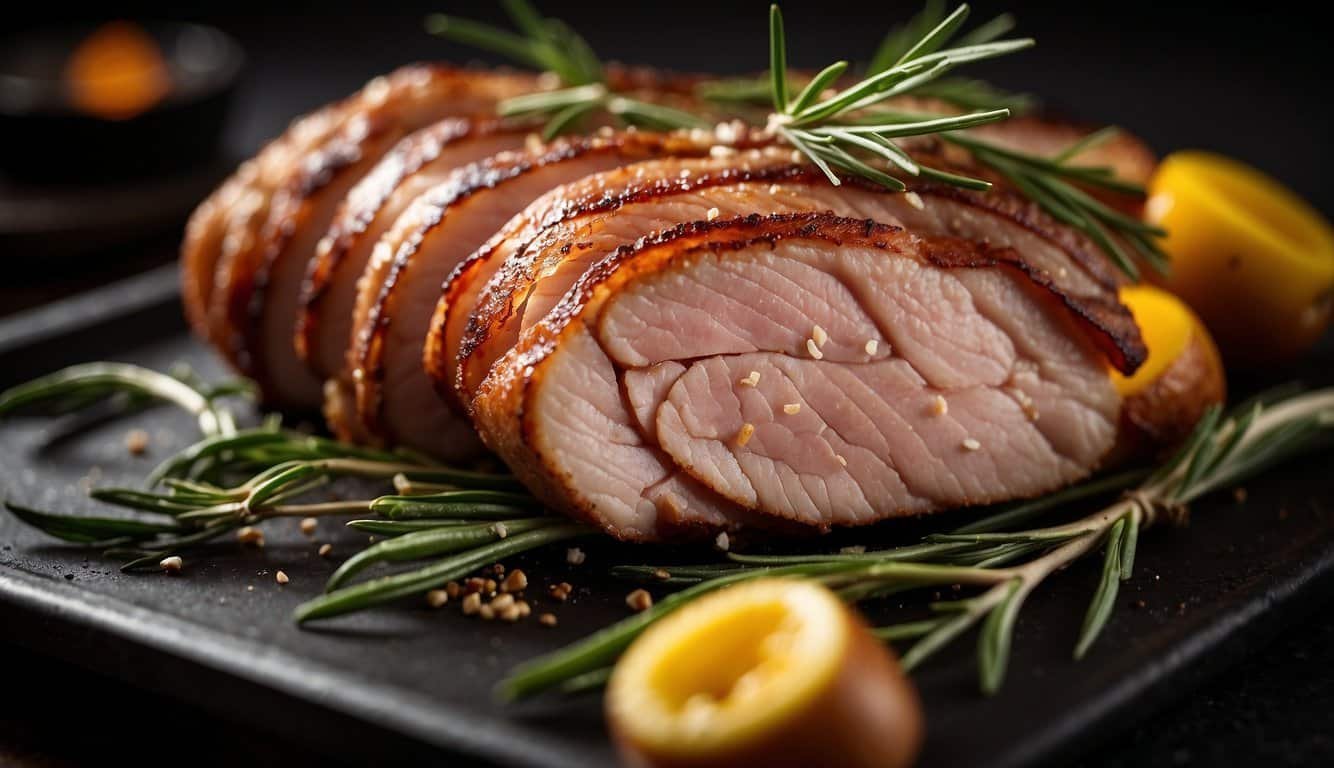When I think of a meal that is both elegant and comforting, bacon-wrapped pork tenderloin is a dish that frequently comes to mind. It’s a recipe I turn to when I want to impress guests or simply treat myself and my family to something special. The tenderloin, known for its lean texture and mild flavor, transforms into a succulent feast when wrapped in the smoky goodness of bacon. This culinary alchemy is not only delicious but also straightforward to prepare, ensuring a delightful main course with relatively minimal fuss.

Wrapping the pork tenderloin in bacon not only infuses it with flavor but also helps to keep the meat moist and tender during the cooking process. Achieving the perfect balance of a well-cooked tenderloin and crispy bacon requires an understanding of the right oven temperature and timing. Through my cooking adventures, I’ve found that roasting the pork in a preheated oven until it reaches the recommended internal temperature is key to a mouthwatering result.
In my repertoire, this dish stands out for its versatility. It pairs excellently with a variety of side dishes and can be adapted with different herbs and seasonings. A hint of rosemary, thyme, or even a dash of brown sugar can add distinctive notes that elevate the flavor profile. Whether I’m planning a dinner party or cooking a Sunday family meal, a bacon-wrapped pork tenderloin never fails to garner appreciation from those gathered around the table.
Ingredients
In crafting a bacon-wrapped pork tenderloin, the quality of ingredients has a profound impact on the final dish. Each ingredient should be chosen with care for the best flavor and texture.
Meat Selection
I select a pork tenderloin for this recipe because of its lean nature and tenderness. When buying pork tenderloin, I ensure it’s of high quality and preferably organic. It should feel firm to the touch and have a pinkish color without any off smells.
Bacon Choice
The type of bacon I wrap around the tenderloin is crucial as it adds a layer of flavor and keeps the meat moist. I usually opt for thin to medium-cut bacon to ensure it cooks evenly with the pork. I avoid using thick-cut bacon as it tends to not crisp as well during the cooking process.
Additional Ingredients
Aside from the pork and bacon, a few additional ingredients are necessary to enhance the flavor. I use the following:
- Salt and Pepper: A simple and effective seasoning.
- Herbs: Rosemary and thyme complement the pork with their aromatic qualities.
- Garlic Powder: Adds a mild, savory note.
- Brown Sugar: For a touch of sweetness to balance the savory components.
All these components come together to create a dish that’s beautifully flavored and perfectly seasoned.
Preparation and Cooking
In preparing this dish, I focus on a meticulous wrapping technique, exact seasoning for flavor enhancement, careful cooking to achieve the perfect doneness, and proper resting for the juices to settle.
Wrapping Technique
To begin, I lay out strips of bacon on parchment paper with slight overlap. I place my trimmed and patted dry pork tenderloin on top, then carefully wrap the pork in bacon, ensuring it’s seam-side down on the sheet pan to keep the bacon in place.
Seasoning and Marinating
I mix garlic powder, onion powder, salt, and pepper in a bowl. After rubbing this mix onto the tenderloin, I sometimes create a separate glaze with ingredients like balsamic vinegar, honey, and brown sugar, which I’ll apply to the bacon-wrapped pork before or during cooking for added flavor.
Cooking Instructions
I preheat my oven to the optimal temperature, commonly around 375°F to 400°F. The tenderloin is placed on a baking sheet or roasting pan, and I’ll cook it for about 25-40 minutes or until an instant-read thermometer indicates the pork has reached 145°F inside.
Resting and Serving
Once the tenderloin is cooked, I remove it from the oven and allow it to rest. This is crucial for the juices to redistribute. After a rest of about 5-10 minutes, I slice the tenderloin into medallions and serve.
Hi, I'm Benjamin. I love cooking, long walks, and my girlfriend! Here you’ll find simple and delicious recipes that you can make in 30 minutes or less.

